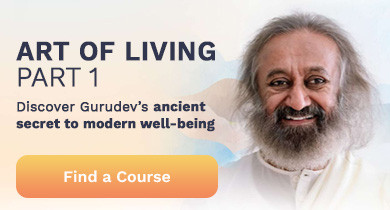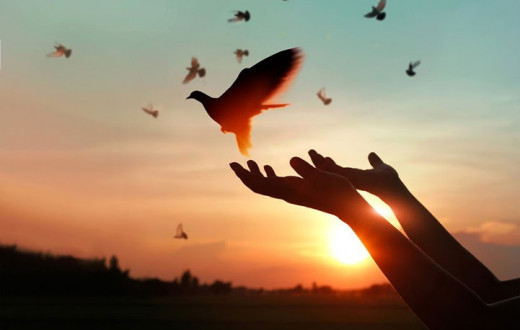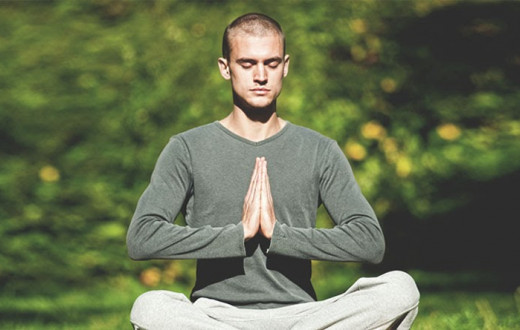
Okay, so you might be wondering why an American would write an article about Indian culture. The reason actually dates back to 1965 when I was a Brownie Girl Scout. I was attending a city-wide Girl Scout event where the main speaker was a teenage girl named, Melinda. She had recently returned from one of the Girl Scouts' international centers in India. Not only was I fascinated with all of the images she shared in a slide show presentation, but when she demonstrated how to wrap a sari (traditional Indian dress) – I knew I had to visit India! I was mesmerized! Who doesn’t love brightly colored sparkly clothes?!? I certainly do.
Though I had only imagined visiting a Girl Scout center, I never dreamed I would get to experience so much of India’s culture when later in life I attended two World Culture Festivals. But that’s another story.
Since that day back in 1965, I have had the good fortune to learn how to meditate (1972), become a teacher of meditation (1998), traveled to both Bengaluru (formerly Bangalore) and New Delhi, as well as make numerous friends of Indian descent. Along the way, you could say I have learned a few things related to India’s vivid culture. And I am here to share a little of that with you!
But before we dive into all things Indian, in the spirit of celebrating cultural diversity, take a moment to watch these funny ads depicting some of the unique cultural differences we share with our fellow humans.
Funny, But True: Cultural Differences
Topics covered:
- Beliefs
- Celebrations
- Did you know?
- Greetings
- Human values
- Social norms
- Traditions
- Vedic science
- A personal invitation
Beliefs
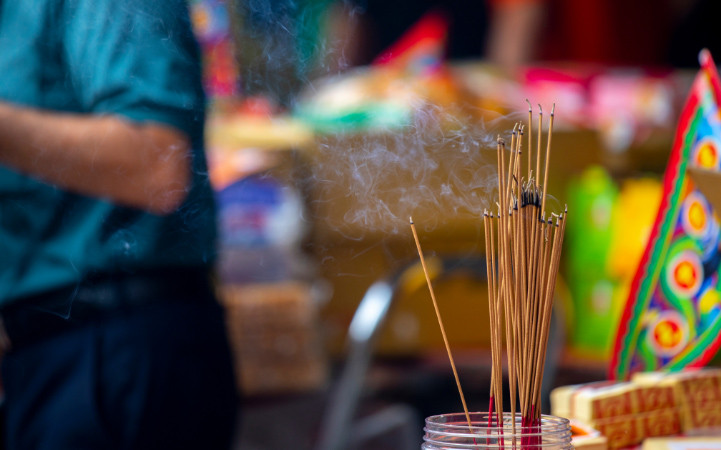
Like much of the world, you can find almost any religion in India. The major religions are Hinduism, Islam, Jainism, Christianity, Buddhism, and Sikhism.
The vast majority of Indians embrace these beliefs.
Karma
I think most people are familiar with the general concept of karma. Whatever you do, comes back to you. Though many spiritual teachers have said that the ways of karma are unfathomable.
Dharma
Dharma, on the other hand, is a less familiar concept in the West. It also has different meanings depending on who you ask. Basically, dharma is that universal aspect, or law, that relates to your purpose in life. In other words, we are born to do or accomplish something very specific to our journey through life. Dharma includes religious practices and duties like being honest and non-violent.
Moksha
Moksha happens when we are liberated from the cycle of birth and death. Simply put, this freedom is attained when we have completed our dharma and settled our karmic debts.
Celebrations
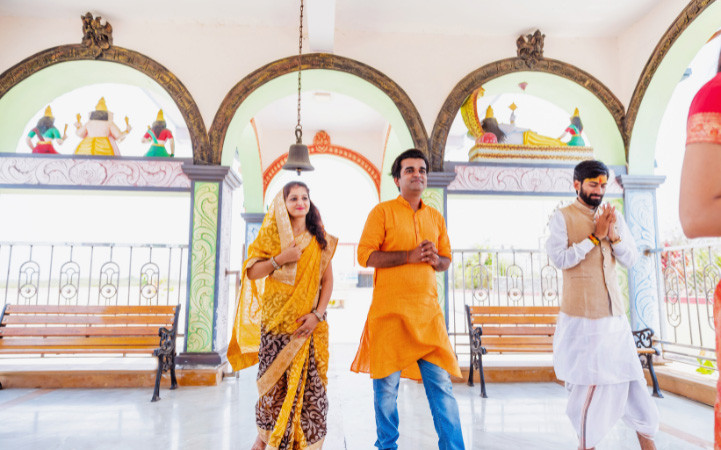
Every Indian I have had the pleasure to call my friend celebrates EVERYTHING! In fact, I would go so far as to say that it seems like hardly a month goes by without some kind of celebration taking place. Even if someone identifies as a Hindu or Jain, Christmas is celebrated. And if another tradition’s holiday isn’t celebrated, it is at least honored and respected. Here are a few of the more common celebrations in Indian culture.
Diwali
Known as the Indian Christmas, Diwali is the festival of lights. A five-day celebration, Diwali includes special foods, fireworks, colored sand mandalas, and special candles and lamps. What is the overall theme of Diwali? It is the celebration of light overcoming darkness and good overpowering evil.
Mahashivratri
Mahashivratri is made up of three Sanskrit words. Maha means very big or great. Shiva is that principle that is the highest in the whole creation and pervades the entire universe. Ratri means night.
Wherever there is beauty, truth, and benevolence, there is Shiva. And, there is no place where the Shiva principle is absent. You can think of Shiva as space or consciousness or even energy. Mahashivratri is revered as one of the most auspicious times for meditating. It is a day when Shiva's energy is most readily available.
Meditation on this day is said to be 1000 times stronger than any other day. Often people fast and stay up all night meditating and singing in Sanskrit.
Navratri
This is a unique festival where on the one hand, a celebration happens and on the other, one can delve deeper to gain knowledge of the self. Navratri means nine nights. During these nine nights, various aspects of the mother divine are celebrated. Typically, Navratri is celebrated in late September or early October.
Guru Purnima
Guru Purnima is more than just a festival or celebration originating in India, it is the “Thanksgiving” and “New Year’s Eve” of spirituality celebrated around the world, and it is kinda a BIG deal! Each year Guru Purnima falls on the first full moon after the summer solstice. This auspicious day is a day for each of us to evaluate how much wiser we have become and how much progress we have made in our lives. Along with feeling grateful for however much we have grown, we also need to renew our resolve to do what we are here to do in this life.
Etiquette
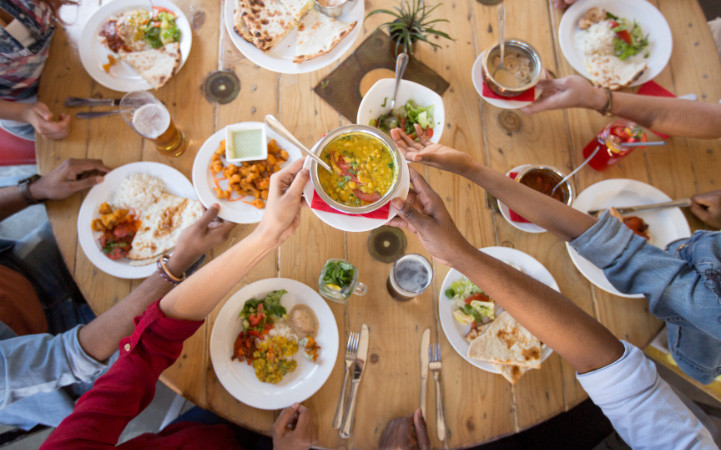
Food etiquette and the right-hand rule
If you have the good fortune to be invited to dinner at an Indian home, you will want to show up 15 to 20 minutes late. Arriving on time, or early, can be seen as inconsiderate or rude. Knowing this, you can avoid accidentally offending your host.
The most important dining rule to remember is always to use your right hand to receive, whether it be a passing dish or prasad (blessed food) given directly into your hand. The left hand is considered unclean as Indians are trained from childhood to only use their left hand to clean themselves after using the toilet. Don’t try to explain that you’re right-handed when you clean yourself, the right hand is the only hand for receiving.
Eating with your hands
Though many Indians use or offer food with eating utensils, eating with your hands is considered proper. It is truly amazing to watch an Indian eating with their hands- both graceful and not as messy as when attempted by an American!
I remember once when someone asked Art of Living founder and spiritual teacher, Gurudev Sri Sri Ravi Shankar, about the tradition of eating with one’s hands. Gurudev explained that according to Ayurveda, touching your food sends signals to your digestive system as to what types and amounts of digestive enzymes to release! Such a big wow!
Did you know?
India is the second largest English-speaking country in the world. Ethnologue reports Indian languages in the number of 398, including 387 living languages and 11 extinct languages. Though it is estimated that only about 120 languages are spoken regularly.
Greetings
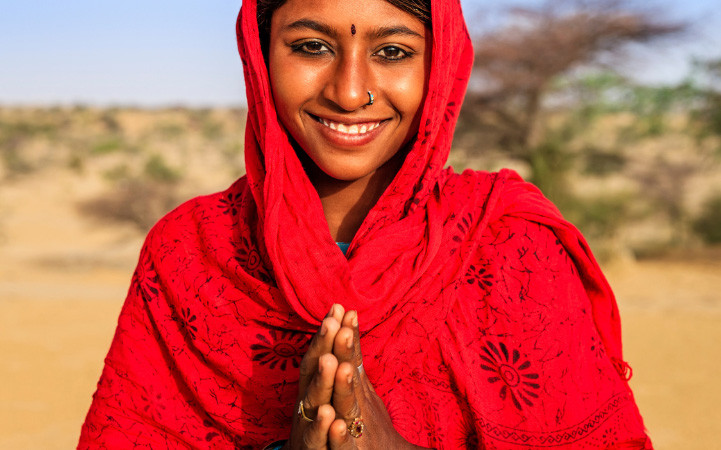
Namaste
The most common greeting in Indian culture is Namaste. It simply means “greetings to you.” Typically, namaste is said with your hands in prayer position in front of your heart, and you can also bow slightly.
Jai Guru Dev
This greeting is typically used in spiritual circles and is more like the Hawaiian greeting, “Aloha.” It can be used to say hello, or goodbye, or as a blessing. The individual words translate as follows, Jai means victory; Guru means big or dispeller of darkness; and Dev means mind. And although there are different interpretations for the entire phrase, my favorite is, “Thank you, Divine, for waking me up.”
Touching of the feet
There are two aspects to the traditional touching of the feet of elders or spiritual teachers. The first is a sign of respect for any elder. The second has to do with the belief that energy and blessings come from the feet, especially in the case of an enlightened master.
Human values
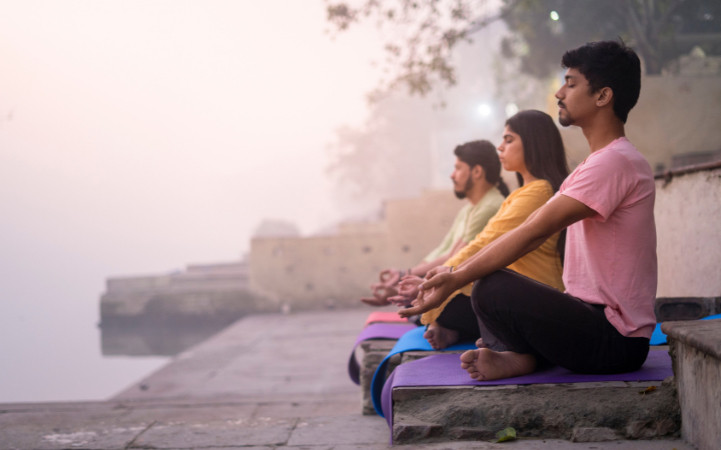
In general, Indian society as a whole places a high value on human values such as non-violence, respect for others, and acceptance. In the past, Gandhi was one of the most well-known for promoting non-violence, while Gurudev is certainly one of today’s most prolific ambassadors for initiating peace around the globe. His “I Stand for Peace” campaign has traveled worldwide with over a million taking the pledge to stand for peace.
Another human value, respect, is part of every Indian child’s upbringing and continues throughout their lives. Parents and elders are seen as a source of wisdom deserving respect.
Acceptance manifests more in subtle ways. Acceptance that individuals have a right to choose their beliefs and celebrate as they desire. Though, India still struggles with accepting the LGTBQ+ community.
Social norms

Public displays of affection, such as kissing or hugging, are not easily acceptable in Indian society. However, it is not uncommon to see two males holding hands as a sign of “brotherliness.”
To a certain degree, today’s Indian society continues to follow a patriarchal structure. Though this perspective is quite different from Western culture, the family resources available after a child is born are extensive. It's quite common for one or both parents (and in-laws) to travel great distances to move in and help care for the newborn child for many months- which is an integral part of child rearing for expatriates.
Many girls receive very little education, and arranged marriages are still commonplace, especially in rural India. India’s bigger cities and expatriates living in the U.S. give Indians more freedom and better education opportunities.
When visiting India, it is recommended to dress modestly. Women should avoid tank tops, short shorts, showing cleavage, or any revealing attire. Long skirts are preferred over wearing pants. Though it is acceptable to show a little of the midriff area when wearing a sari or other traditional clothing. There are far fewer restrictions for men.
If you’re visiting India, you may notice that personal space in India is much smaller than in the U.S. Traveling in crowds may feel a bit challenging for Westerners.
Dancing is a big part of Indian culture. In the U.S., most males are not comfortable expressing themselves through dance, whereas Indian men are typically very comfortable dancing! Some of my Indian guy friends have the best dance moves! Perhaps it is due to all the Bollywood movies. 😉
Traditions
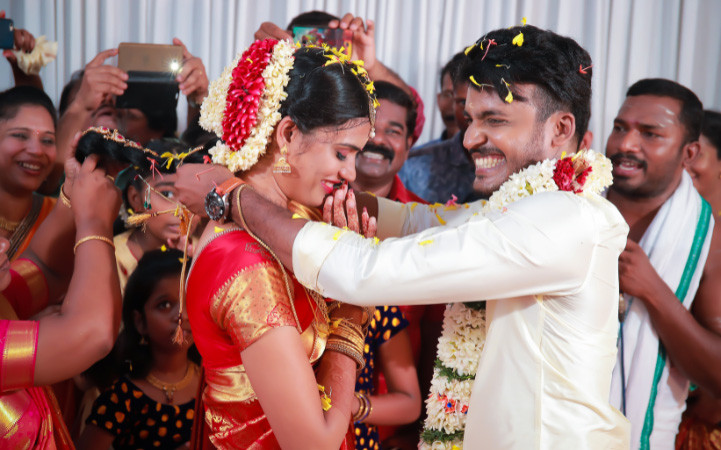
Matchmaking
Though the Western world typically sees arranged marriages as an outdated practice, Netflix’s popular series, Indian Matchmaking, has shown a more modern version of this ancient tradition. Considering everything from the caste system, Jyotish astrology, face reading, biodata sheets, and wish lists– matches are made that sometimes include a dating period.
Even Art of Living has a matrimony website to aid those in the Indian community. Love matches are also more accepted in India now.
Bindi wearing
Another old-as-time practice of Indian women is wearing bindis - a colored circle, or bejeweled sticker worn between the eyebrows (sixth chakra). The wearer is believed to retain energy and strengthen focus.
Interestingly, bindis were reserved for a married woman, and certain colors had particular meanings. Nowadays bindis can be worn by anyone and are often seen as a fashion accessory.
Vedic sciences
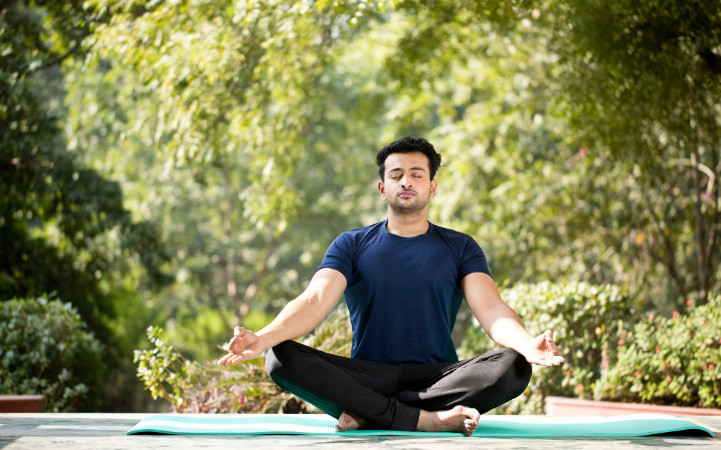
Vedic sciences are embedded in everyday life for many Indians, and for others, there is at least some part of their lives influenced by this ancient knowledge.
Ayurveda
The science of Ayurveda is thousands of years old and offers a holistic approach to physical and mental health. Most Indian homes are at least familiar with Ayurveda, and many practice the various health practices in daily life. Ayurveda is known for utilizing herbs and spices in cooking to bring balance and good health.
The world of yoga
In the West, we often think of yoga as just poses. But the world of yoga includes different breathing exercises called pranayama, as well as meditation. The Art of Living offers many programs in all three of these areas, with the most popular being SKY Breath Meditation.
Wisdom
India is steeped in philosophy and knowledge for life. Three popular series offered through the Journey app are Bhakti Sutras (on the ecstasy of Divine love), Patanjali Yoga Sutras (a practical spiritual guide), and Ashtavakra Gita (a commentary between a king and saint which expands consciousness).
A personal invitation
World Culture Festival coming to America | It's A DC Thing
If you have enjoyed learning about the culture of India, I invite you to attend the next World Culture Festival (WCF) which takes place in Washington DC on the National Mall from Sept. 29th through Oct. 1st this year! WCF is a place where you can renew, groove, dance, sing and connect with millions who long for more unity and less division.
Here’s what Gurudev has said about the World Culture Festival.
“The purpose of the World Culture Festival is to send a message that the whole world is one family and we can all coexist with our differences. It is an opportunity for leaders from all segments of society – business, politics, religion, and academia – to come together and renew their vision to work for the common welfare.
The festival provides a platform for the preservation of local and indigenous traditions through music and dance as well as the opportunity for everyone else to relish and enjoy. This is a movement for the revival of universal human values such as love, compassion, and friendliness.”
Get your free passes here to celebrate all the world’s cultures with your friends and family members!

